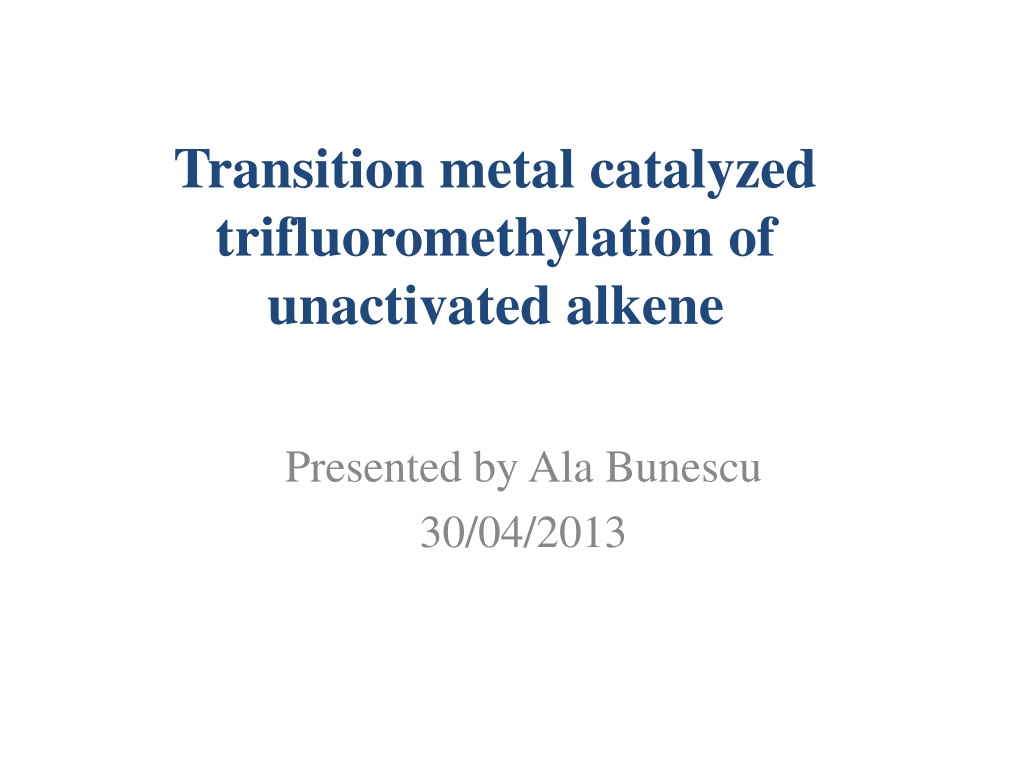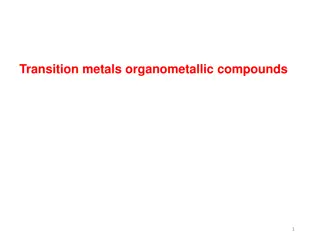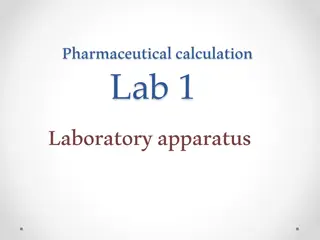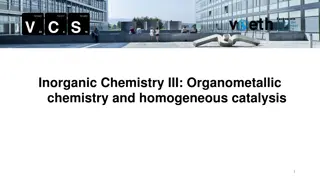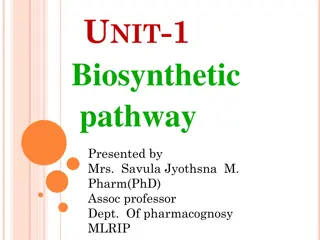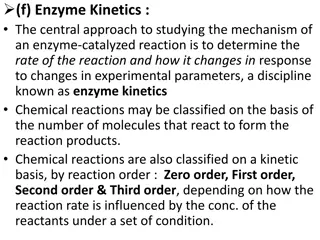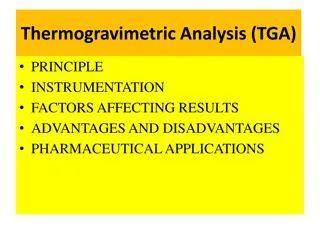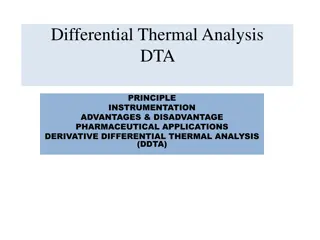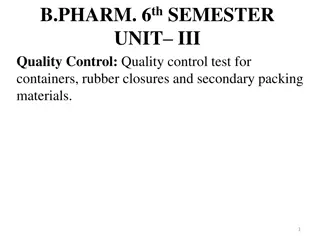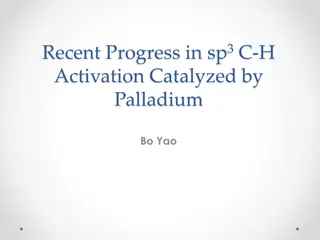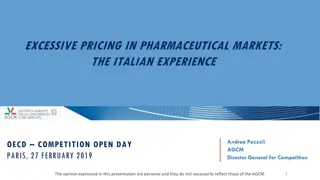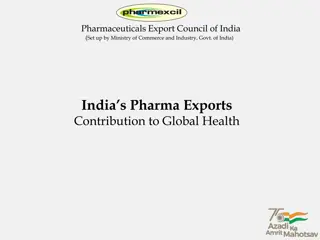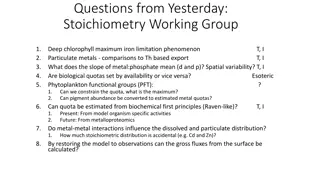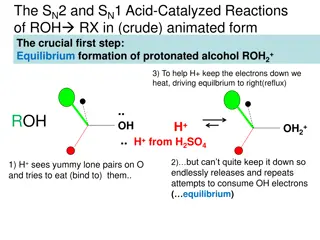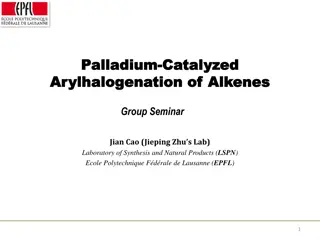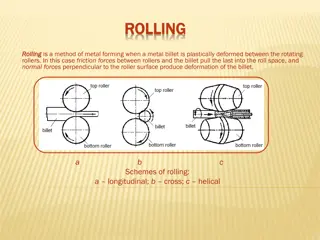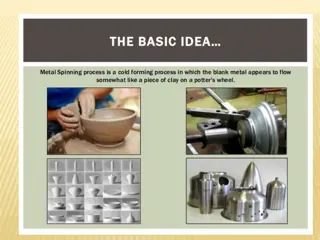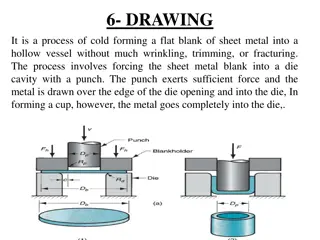Transition Metal Catalyzed Trifluoromethylation and Its Importance in Pharmaceutical and Material Science
Transition metal catalyzed trifluoromethylation is a valuable method for introducing trifluoromethyl groups into unactivated alkenes, with significant impact in pharmaceutical, agrochemistry, and material science. The incorporation of CF3 is essential due to its enhancement of metabolic stability, protein-ligand interactions, lipophilicity, electronegativity, and stability of materials. Various methods exist for introducing CF3, including nucleophilic, electrophilic, and radical approaches. The versatility of trifluoromethylation allows for functionalization of unactivated double bonds, halotrifluoromethylation, hydrotrifluoromethylation, and allylic and oxytrifluoromethylation. Specific examples such as iodotrifluoromethylation and chlorotrifluoromethylation demonstrate the diverse applications of this synthetic strategy.
Download Presentation

Please find below an Image/Link to download the presentation.
The content on the website is provided AS IS for your information and personal use only. It may not be sold, licensed, or shared on other websites without obtaining consent from the author. Download presentation by click this link. If you encounter any issues during the download, it is possible that the publisher has removed the file from their server.
E N D
Presentation Transcript
Transition metal catalyzed trifluoromethylation of unactivated alkene Presented by Ala Bunescu 30/04/2013
Why CF3? Important impact in pharmaceutic, agrochemistry and material science: before 1957 no F-containing drug had been developed, our days 150 fluorinated drugs have come to market ~20% of all pharmaceuticals; ~30% for agrochemicals ~ Diederich- Science 2007, 317, 1881; J. T. Welch, Tetrahedron 1987, 43, 3123.
What is so special about CF3? F enhance metabolic stability (mainly by lowering the susceptibility to cytochrome P450 enzymatic oxidation) Enhance protein ligand interactions Increased lipophilicity High elecrtonegativity (perturbation of pKa neighbor group, impact on bioavailability) Small size (2.5 x Me) Improve thermal, chemical stability of materials Diederich, Science 2007, 317, 1881; Gouverneur, Chem. Soc. Rev. 2008, 37, 320; McClinton-Tetrahedron,1992, 6555
Methods to introduce CF3 Nucleophilic Electrophilic Radical
- McMillan -Trifluoromethylation of Aldehydes via Photoredox Organocatalysis McMillan-JACS, 2009, 10875
Trifluoromethylation of unactivated double bonds Halotrifluoromehylation Hydrotriflorometylation Allylic CF3 Oxytrifluoromethylation
Iodotrifluoromethylation of double bond (ATRA) ATRA: atom transfer radical addition T. Fuchikami, I. Ojima, Tetrahedron Lett. 1984, 25, 303 306
Iodotrifluoromethylation of double bond (ATRA) Proposed Mechanism Sthephenson-JACS, 2012, 8875
Chlorotrifluoromethylation (ATRA) Yoshida- J. Chem. Soc. Perkin Trans. 1 1991, 627 Kamigata J. Chem. Soc. Chem. Commun. 1989, 1559
Hydrotrifluoromethylation of unactivated double bonds Gouverneur-JACS, 2013, 2505 Qing-ACIE, 2013,2198
Hydrotrifluoromethylation double bonds: Ru from carvone from quinine Gouverneur-JACS, 2013, 2505
Hydrotrifluoromethylation of unactivated double bonds: Ru Proposed Mechanism Reduction potential Umemeto reagent: -0.25V Ru(bpy)3(II): 0.77V MeOH: 1.5 V Gouverneur-JACS, 2013, 2505
Hydrotrifluoromethylation of unactivated double bonds: Ag from 4-methyl umbelliferone from isopulegol from estrone from alkyne Qing-ACIE, 2013,2198
Hydrotrifluoromethylation of unactivated double bonds: Ag Proposed Mechanism Qing-ACIE, 2013,2198
Copper catalyzed allylic trifluoromethylation Jianbo Wang-JACS, 2011,16410 15 examples 44%-97% Buchwald ACIE, 2011, 9120 Liu-JACS, 2011,15300 , , DMAc
Copper catalyzed allylic trifluoromethylation Buchwald formation of an free allylic radical is unlikely to occur - high selectivity for the linear trifluoromethylation (in contrast to Kharasch Sosnovsky-type oxidative alkene functionalizations)
Copper catalyzed allylic trifluoromethylation Wang CF3 radical involved allyl radical wasn t trapped using TEMPO no evidence of the involvement of either allylmetal species or trifluoromethylmetal species in the mechanism.
Copper catalyzed allylic trifluoromethylation Liu Cu(I)/ Cu(III) Heck like four memebered ring TS regioselectivity Direct protonation:
Oxytrifluoromethylation of unactivated double bonds Sodeoka-TL, 2012, 5503 Szabo-OL, 2012, 2882 Buchwald- JACS, 2012, 12462 Akita- ACIE 2012,9567
Three-component Oxytrifluoromethylation of Alkenes Mediated by Photoredox Catalysts Buchwald- JACS, 2012, 12462
Three-component Oxytrifluoromethylation of Alkenes Mediated by Photoredox Catalysts Linear alkene doesn t react Akita- ACIE 2012,9567
Oxytrifluoromethylation of unactivated double bonds Akita- ACIE 2012,9567
